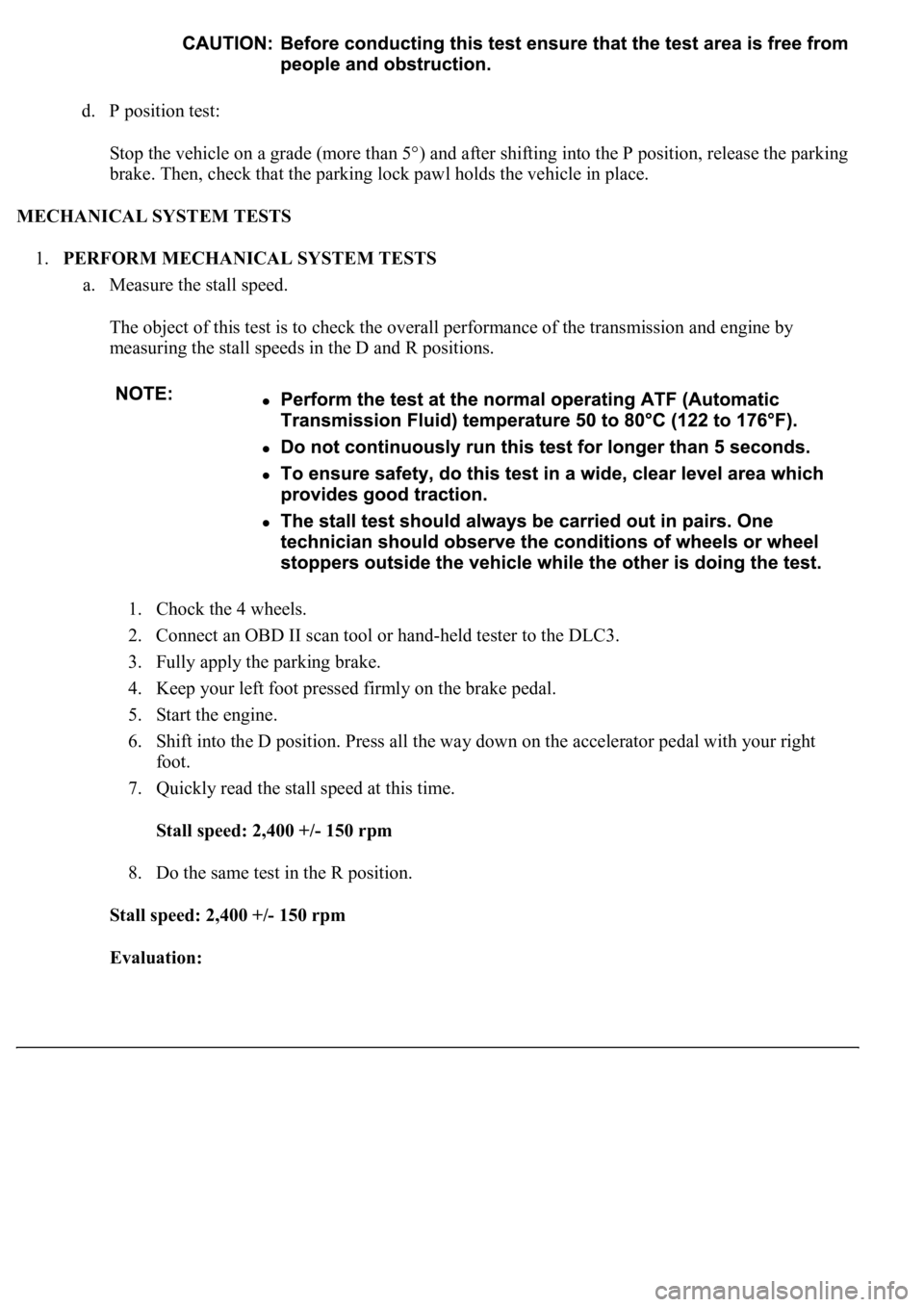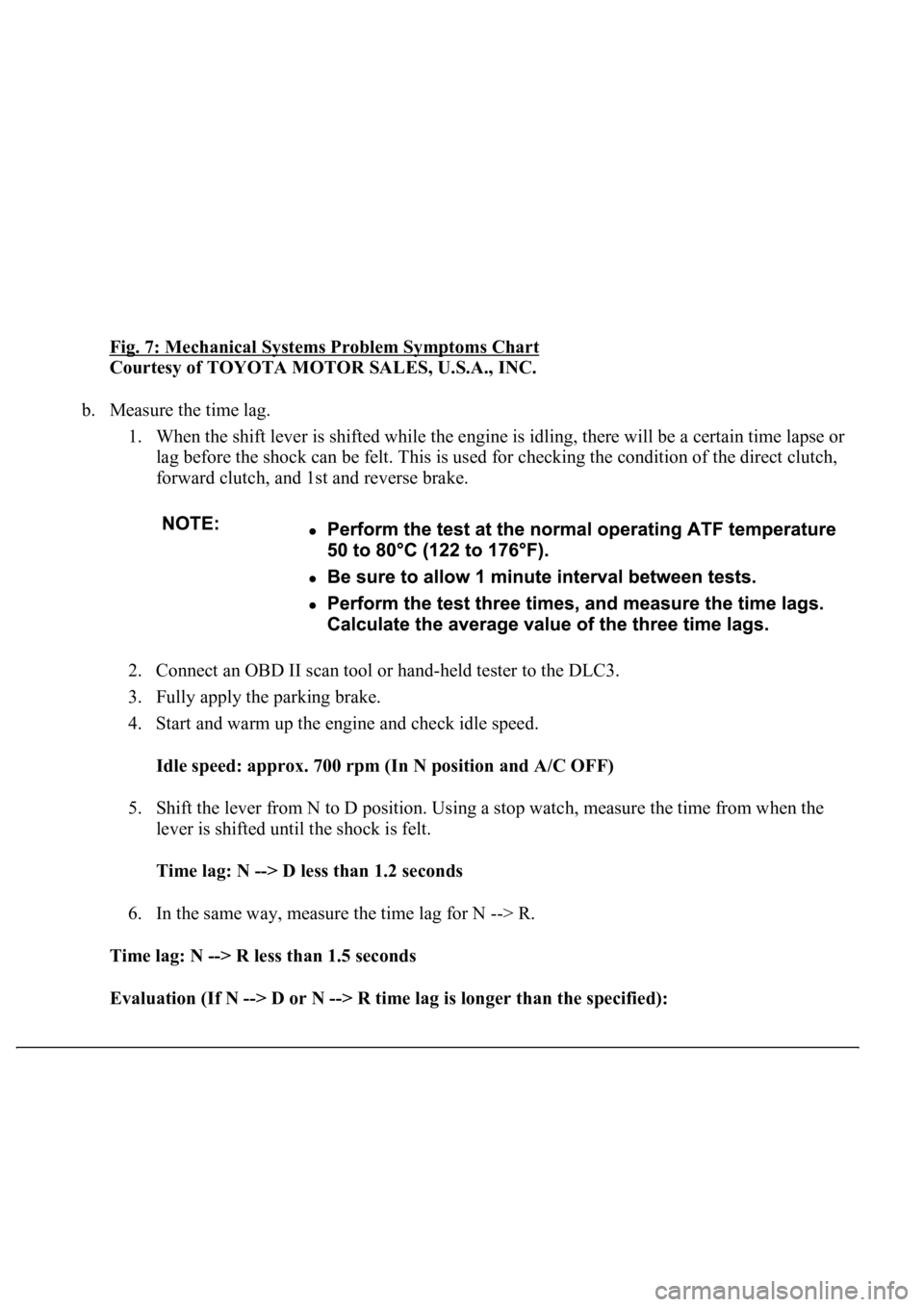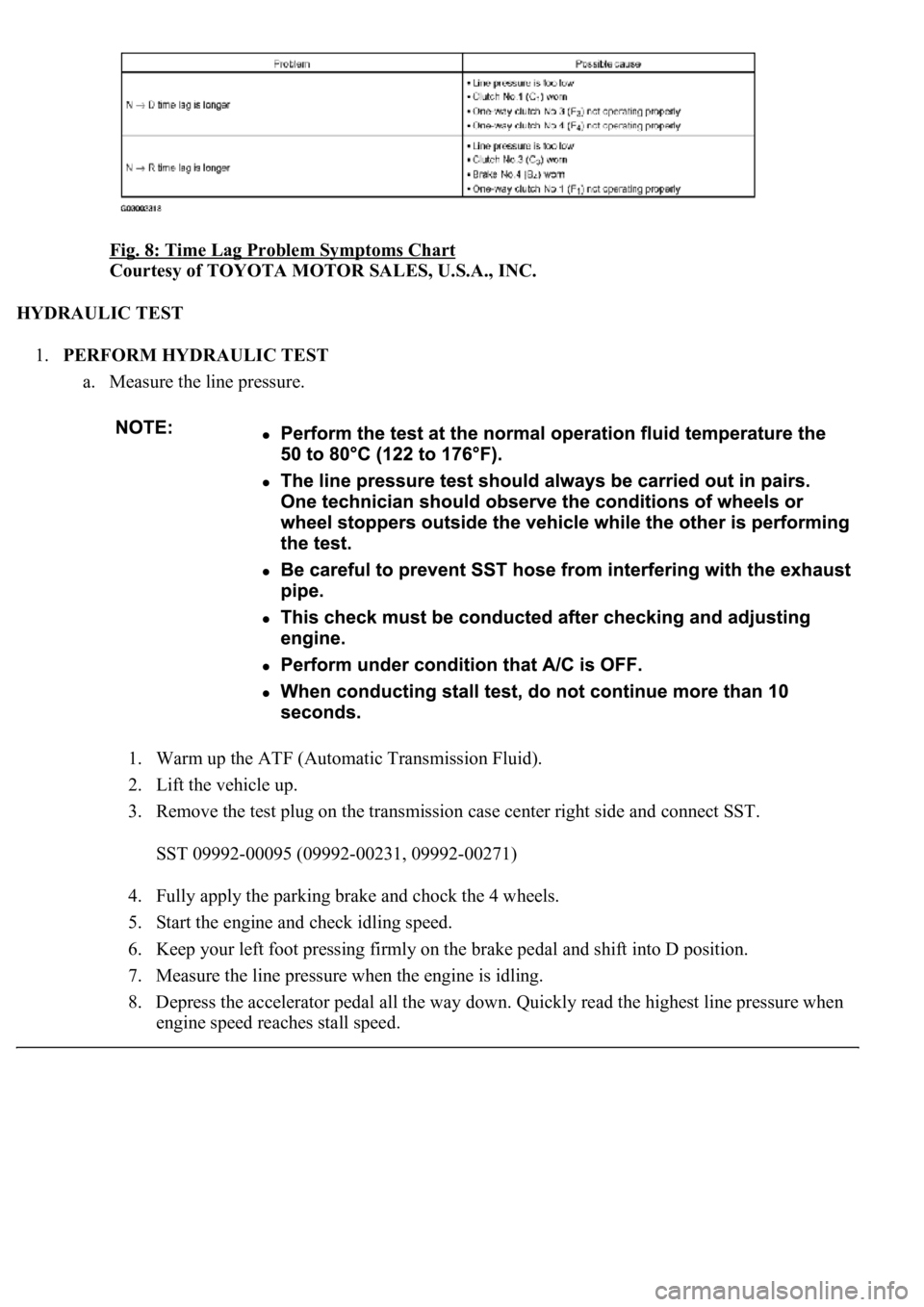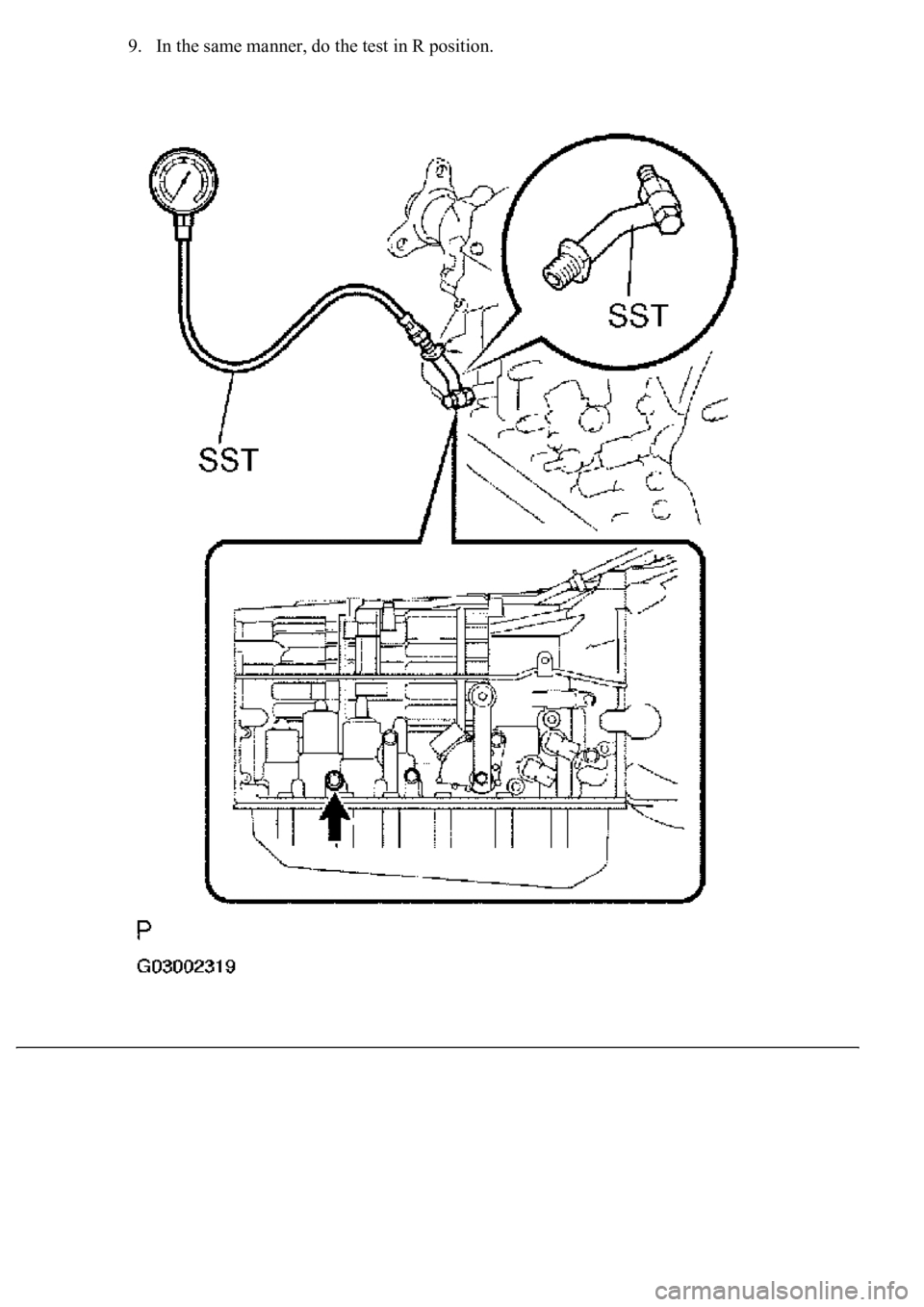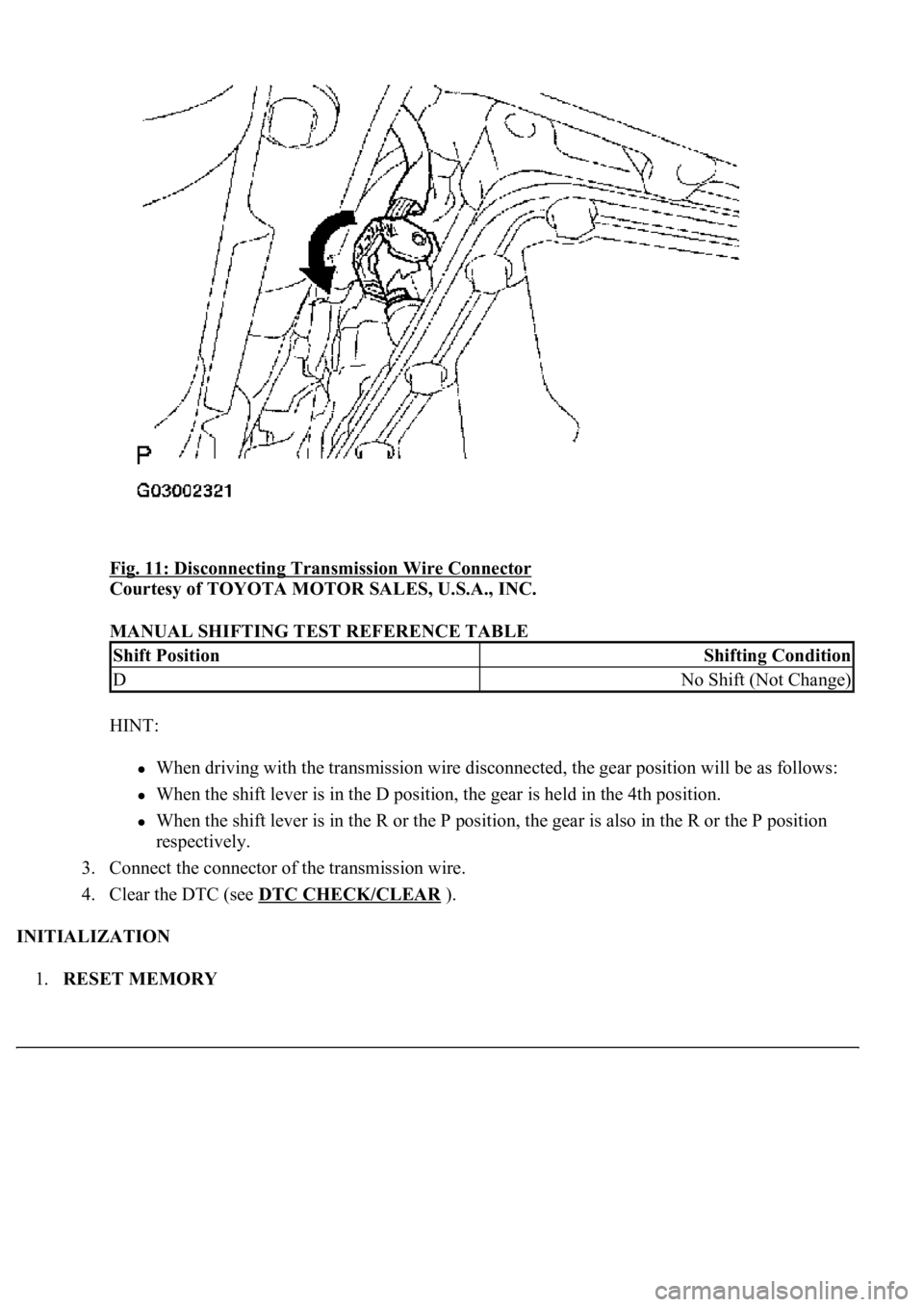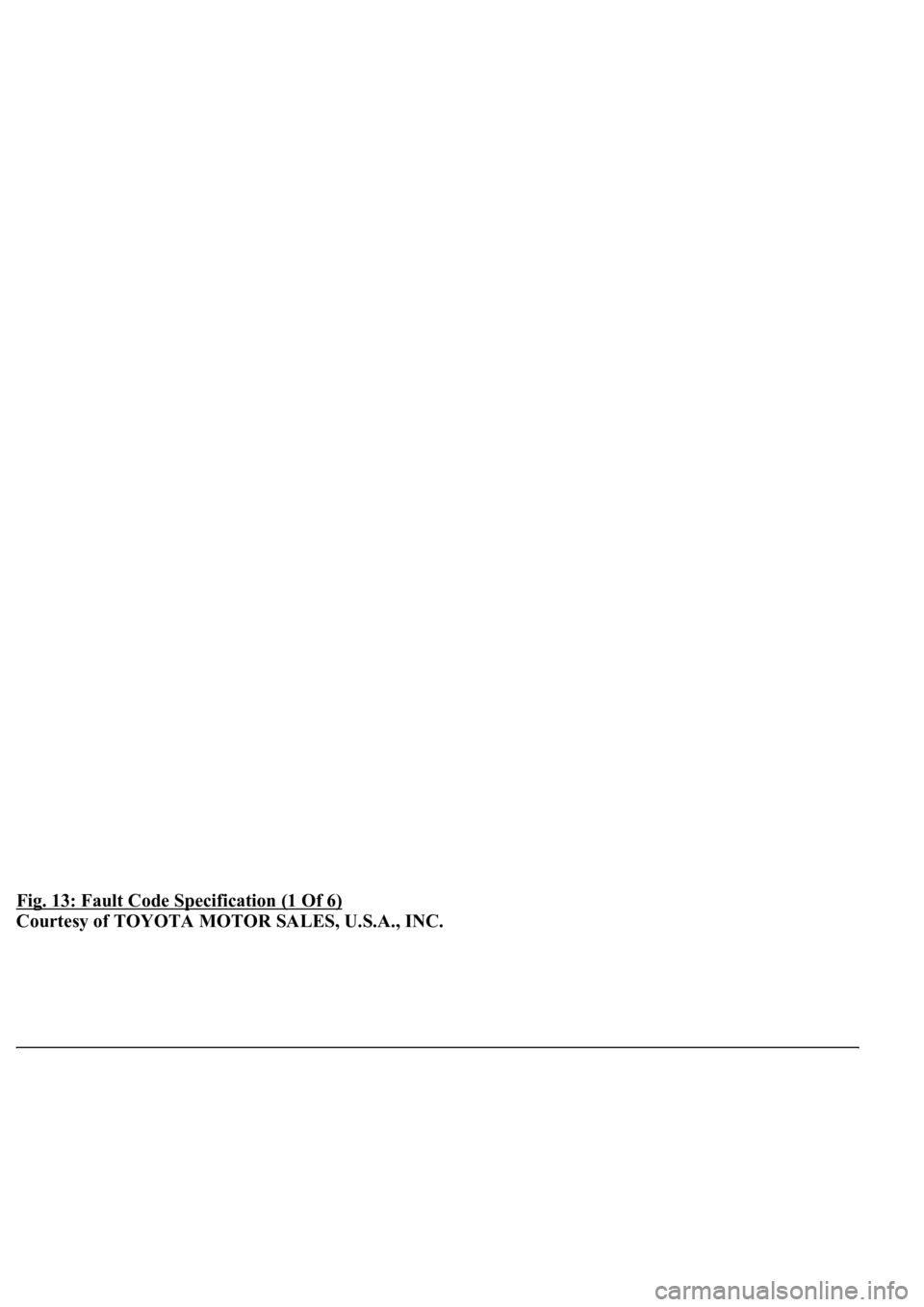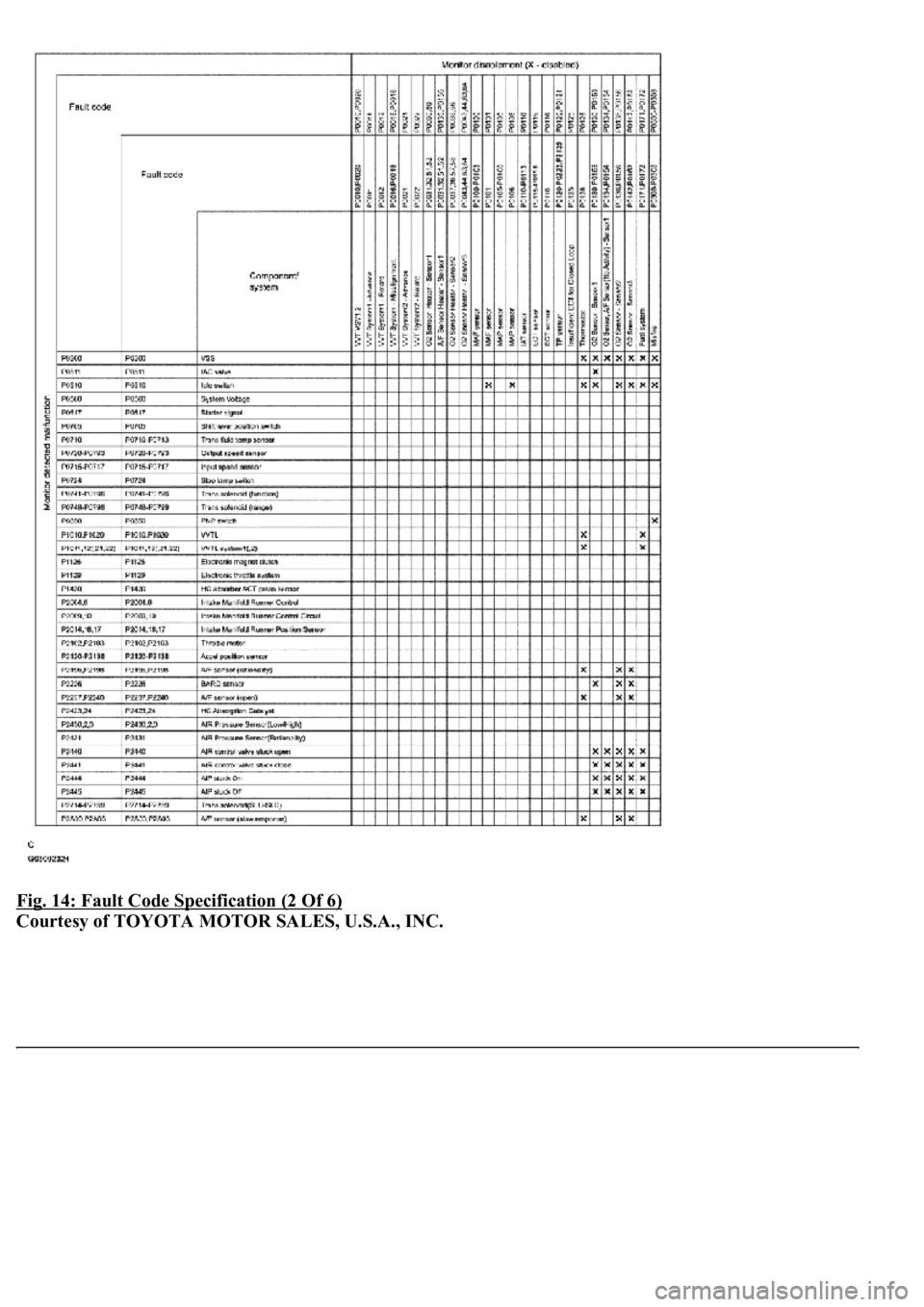LEXUS LS430 2003 Factory Repair Manual
Manufacturer: LEXUS, Model Year: 2003,
Model line: LS430,
Model: LEXUS LS430 2003
Pages: 4500, PDF Size: 87.45 MB
LEXUS LS430 2003 Factory Repair Manual
LS430 2003
LEXUS
LEXUS
https://www.carmanualsonline.info/img/36/57050/w960_57050-0.png
LEXUS LS430 2003 Factory Repair Manual
Trending: fuse chart, Manifold gasket, Spark plug, Conditioner, cruise control, wiring, inter lock cable
Page 2681 of 4500
d. P position test:
Stop the vehicle on a grade (more than 5°) and after shifting into the P position, release the parking
brake. Then, check that the parking lock pawl holds the vehicle in place.
MECHANICAL SYSTEM TESTS
1.PERFORM MECHANICAL SYSTEM TESTS
a. Measure the stall speed.
The object of this test is to check the overall performance of the transmission and engine by
measuring the stall speeds in the D and R positions.
1. Chock the 4 wheels.
2. Connect an OBD II scan tool or hand-held tester to the DLC3.
3. Fully apply the parking brake.
4. Keep your left foot pressed firmly on the brake pedal.
5. Start the engine.
6. Shift into the D position. Press all the way down on the accelerator pedal with your right
foot.
7. Quickly read the stall speed at this time.
Stall speed: 2,400 +/- 150 rpm
8. Do the same test in the R position.
Stall speed: 2,400 +/- 150 rpm
Evaluation:
Page 2682 of 4500
Fig. 7: Mechanical Systems Problem Symptoms Chart
Courtesy of TOYOTA MOTOR SALES, U.S.A., INC.
b. Measure the time lag.
1. When the shift lever is shifted while the engine is idling, there will be a certain time lapse or
lag before the shock can be felt. This is used for checking the condition of the direct clutch,
forward clutch, and 1st and reverse brake.
2. Connect an OBD II scan tool or hand-held tester to the DLC3.
3. Fully apply the parking brake.
4. Start and warm up the engine and check idle speed.
Idle speed: approx. 700 rpm (In N position and A/C OFF)
5. Shift the lever from N to D position. Using a stop watch, measure the time from when the
lever is shifted until the shock is felt.
Time lag: N --> D less than 1.2 seconds
6. In the same way, measure the time lag for N --> R.
Time lag: N --> R less than 1.5 seconds
Evaluation (If N --> D or N --> R time lag is longer than the specified):
Page 2683 of 4500
Fig. 8: Time Lag Problem Symptoms Chart
Courtesy of TOYOTA MOTOR SALES, U.S.A., INC.
HYDRAULIC TEST
1.PERFORM HYDRAULIC TEST
a. Measure the line pressure.
1. Warm up the ATF (Automatic Transmission Fluid).
2. Lift the vehicle up.
3. Remove the test plug on the transmission case center right side and connect SST.
SST 09992-00095 (09992-00231, 09992-00271)
4. Fully apply the parking brake and chock the 4 wheels.
5. Start the engine and check idling speed.
6. Keep your left foot pressing firmly on the brake pedal and shift into D position.
7. Measure the line pressure when the engine is idling.
8. Depress the accelerator pedal all the way down. Quickly read the highest line pressure when
en
gine speed reaches stall speed.
Page 2684 of 4500
9. In the same manner, do the test in R position.
Page 2685 of 4500
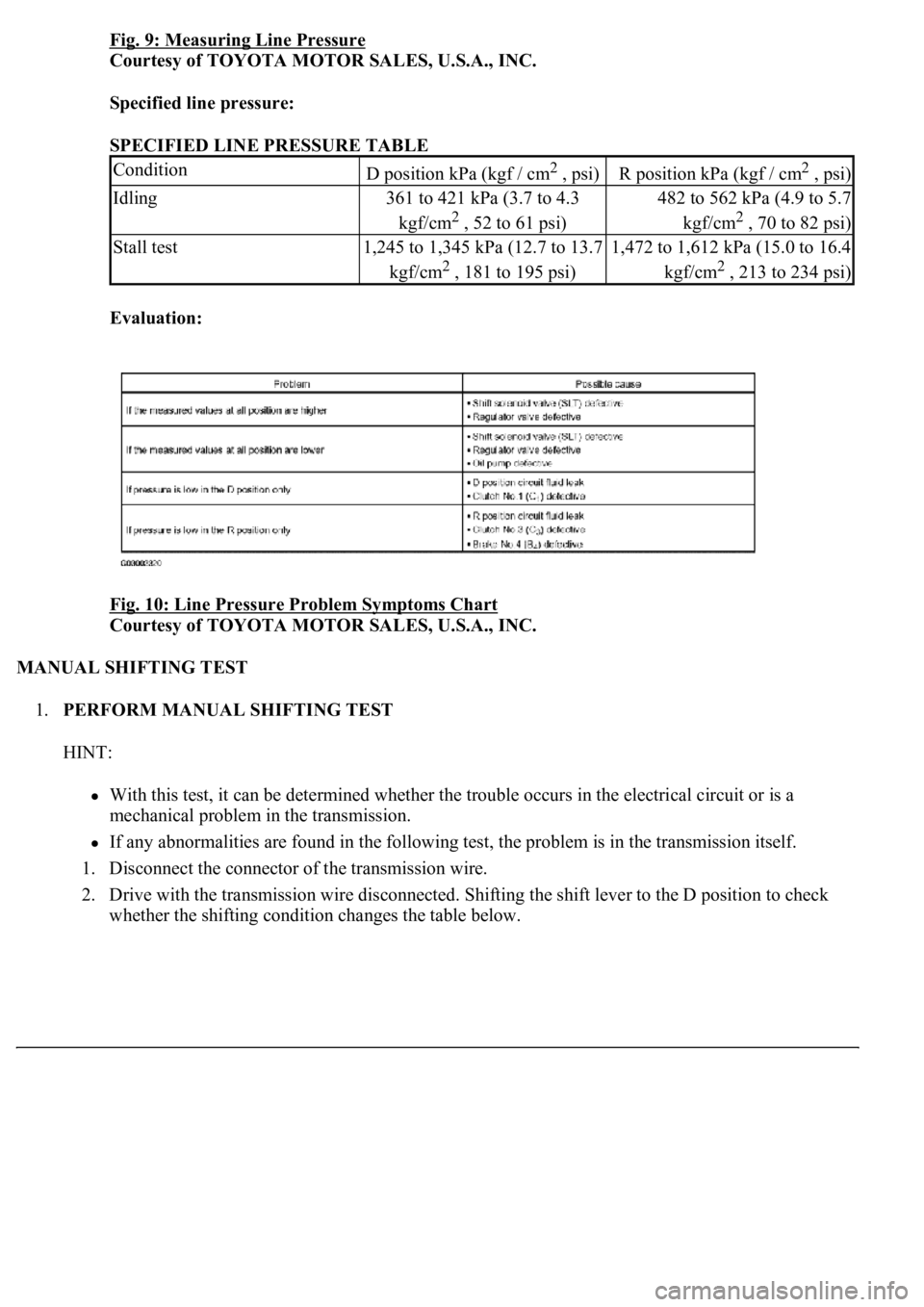
Fig. 9: Measuring Line Pressure
Courtesy of TOYOTA MOTOR SALES, U.S.A., INC.
Specified line pressure:
SPECIFIED LINE PRESSURE TABLE
Evaluation:
Fig. 10: Line Pressure Problem Symptoms Chart
Courtesy of TOYOTA MOTOR SALES, U.S.A., INC.
MANUAL SHIFTING TEST
1.PERFORM MANUAL SHIFTING TEST
HINT:
With this test, it can be determined whether the trouble occurs in the electrical circuit or is a
mechanical problem in the transmission.
If any abnormalities are found in the following test, the problem is in the transmission itself.
1. Disconnect the connector of the transmission wire.
2. Drive with the transmission wire disconnected. Shifting the shift lever to the D position to check
<005a004b00480057004b0048005500030057004b004800030056004b004c00490057004c0051004a00030046005200510047004c0057004c0052005100030046004b00440051004a0048005600030057004b00480003005700440045004f00480003004500
48004f0052005a00110003[
ConditionD position kPa (kgf / cm2 , psi)R position kPa (kgf / cm2 , psi)
Idling361 to 421 kPa (3.7 to 4.3
kgf/cm
2 , 52 to 61 psi)
482 to 562 kPa (4.9 to 5.7
kgf/cm
2 , 70 to 82 psi)
Stall test1,245 to 1,345 kPa (12.7 to 13.7
kgf/cm
2 , 181 to 195 psi)
1,472 to 1,612 kPa (15.0 to 16.4
kgf/cm
2 , 213 to 234 psi)
Page 2686 of 4500
Fig. 11: Disconnecting Transmission Wire Connector
Courtesy of TOYOTA MOTOR SALES, U.S.A., INC.
MANUAL SHIFTING TEST REFERENCE TABLE
HINT:
When driving with the transmission wire disconnected, the gear position will be as follows:
When the shift lever is in the D position, the gear is held in the 4th position.
When the shift lever is in the R or the P position, the gear is also in the R or the P position
respectively.
3. Connect the connector of the transmission wire.
4. Clear the DTC (see DTC CHECK/CLEAR
).
INITIALIZATION
1.RESET MEMORY
Shift PositionShifting Condition
DNo Shift (Not Change)
Page 2687 of 4500
HINT:
The ECM memorizes the condition that the ECT controls the automatic transmission assy and engine assy
according to those characteristics. Therefore, when the automatic transmission assy, engine assy, or ECM
has been replaced, it is necessary to reset the memory so that the ECM can memorize the new
information. Reset procedure is as follows.
a. Turn the ignition switch off.
b. Connect the hand-held tester together with the CAN VIM (controller area network vehicle interface
module) to the DLC3.
c. Turn the ignition switch to the ON position and push the hand-held tester main switch on.
d. Select the item "DIAGNOSIS/ENHANCED OBD II".
e. Perform the reset memory procedure from the ENGINE menu.
HINT:
The ECM is learned b
y performing the ROAD TEST.
Page 2688 of 4500
Fig. 12: Identifying Road Test Flow Chart
Courtesy of TOYOTA MOTOR SALES, U.S.A., INC.
LIST OF DISABLE A MONITOR
HINT:
This table indicates ECM monitoring status for the items in the upper columns if the DTCs in each line on the
left are being set.
As for the "X" mark, when the DTC on the left is stored, detection of the DTC in the upper column is not
performed.
Page 2689 of 4500
Fig. 13: Fault Code Specification (1 Of 6)
Courtesy of TOYOTA MOTOR SALES, U.S.A., INC.
Page 2690 of 4500
Fig. 14: Fault Code Specification (2 Of 6)
Courtesy of TOYOTA MOTOR SALES, U.S.A., INC.
Trending: catalytic converter, oil dipstick, Manifold gasket, transmission oil, Combination, automatic transmission fluid, Expansion Valve
